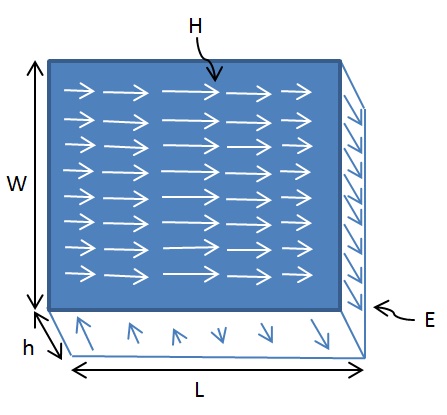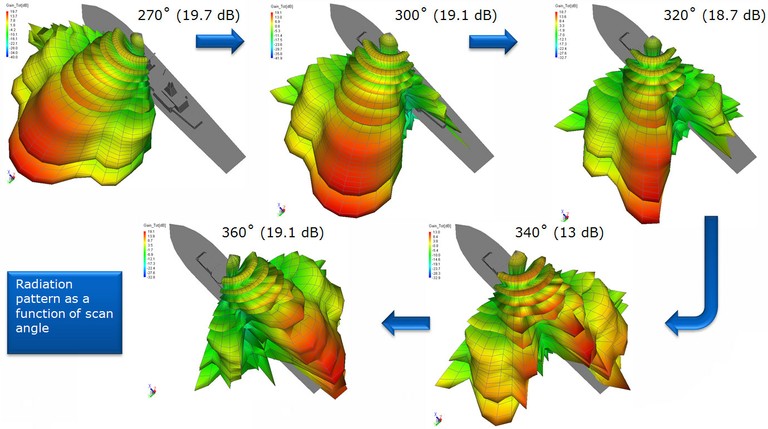Antenna Pattern
Antenna Pattern or Radiation Pattern is a three dimensional description of how the antenna radiates energy in to the space around it. All practical antennas are directional i.e. they radiate more energy in certain directions and lesser energy in other directions. Although the Radiation Pattern is a three dimensional quantity it can be described in two perpendicular planes known as the principal planes. Usually one of these planes is horizontal (azimuth plane) and the other is vertical (elevation plane).
Gain
As discussed previously antennas do not radiate uniformly in all directions. Antenna Gain is the ratio of the power transmitted in a certain direction to the power transmitted in that direction by an isotropic source. An isotropic source is an imaginary source which radiates power uniformly in all directions. The Antenna Gain is usually given in units of decibels and is given as dBi (dB above an isotropic source). The Antenna Gain may also be given with reference to a Dipole Antenna and this is labelled as dBd. When no direction is specified Antenna Gain refers to the maximum Gain.
3-dB Beamwidth
The 3-dB Beamwidth is the angle between two points on the main lobe of the antenna that are 3dB down from the maximum value. A smaller Beamwidth means that an antenna is more directional and a higher Beamwidth means that the antenna is less directional. The 3-dB Beamwidth is usually defined in the two principal planes i.e. the azimuth plane and elevation plane.
Front-to-back ratio
The front to back ration (F/B) is the ratio of the Gain in the forward direction to the Gain in the backward direction within a principal plane (azimuth or elevation). It is an important metric in certain scenarios where radiation towards the back of the antenna is undesirable e.g. as in 120 degree sectored antennas used in cellular networks. The ratio is usually given on a logarithmic scale and labelled as dB.
Polarization
The polarization of an antenna is a somewhat difficult concept to comprehend. The polarization of an antenna describes the orientation of the E-field that is generated by the antenna. Usually the orientation is horizontal or vertical but it could also be circular for the case where the E-field rotates (clockwise or counter clockwise) as it travels. If a transmit antenna is vertically polarized then the receive antenna should also be vertically polarized to achieve maximum power transfer through the medium.
VSWR
The voltage standing wave ratio (VSWR) is defined as the ratio of the maximum voltage to the minimum voltage in a standing wave pattern. A ratio of 1:1 means that all power was transferred to the antenna and there are no reflections. Typically RF components have 50 or 75 ohms impedance and antennas must have the same impedance to achieve maximum power transfer.
VSWR bandwidth
The VSWR bandwidth is defined as the frequency range over which an antenna has a specified VSWR. Often, the 2:1 VSWR bandwidth is specified, but 1.5:1 is also common.
Omnidirectional antenna
An omnidirectional antenna is an antenna that has a non-directional pattern (circular pattern) in a given plane with a directional pattern in any orthogonal plane. Examples of omnidirectional antennas are dipoles and collinear antennas.
Reference:
[1] Cisco Aironet Antennas and Accessories, Antenna Patterns and Their Meaning.













